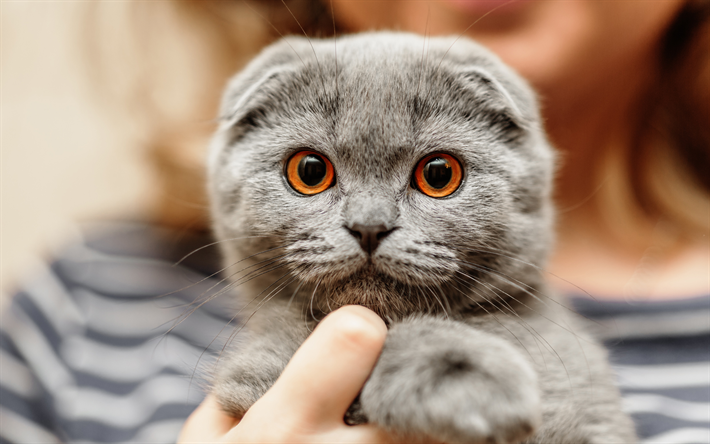Genetic mutations are permanent alterations (or anomalies) of genes. While these anomalies can have different impacts on an individual – beneficial, neutral or even harmful – they are important sources of genetic diversity in populations of all species, including cats. Some of these genetic anomalies can result in interesting differences in physical appearance. Here are some of the body-type mutations in cats.
Background information
Genetic mutations which lead to alterations in the physical appearance of cats are designated as body-type mutations. In the wild, mutations that lead to the unusual appearance of cats would often quickly disappear from the population because unique-looking individuals would fail to breed in large numbers. However, in domestic cats, some of these body-type mutations (i.e. folded ears) are considered attractive, thus being selected for and perpetuated within the domestic cat population. This is not always good for our pets, as many of these naturally-occurring mutations are actually harmful (or even lethal when in homozygous form) and would normally be removed from the population if it wasn’t for human intervention.
Variations in ears
Typically, cats have erect and slightly pointed ears. There are several identified mutations which impact the form and shape of feline ears:
1.Folded ears. This trait is associated with a natural dominant mutation in the Fd gene. The mutation is specific to the Scottish Fold breed. Their ears are folded forward and down to different degrees of folding. However, this gene is also associated with cartilage defects such as swollen feet and a thickened tail. The mutation is harmful in homozygous form (Fd Fd), or when a cat inherits one copy of the mutation from each parent, in which case it causes osteochondrodysplasia. This is why breeders breed folds only with non-folds to avoid homozygous fold offspring.
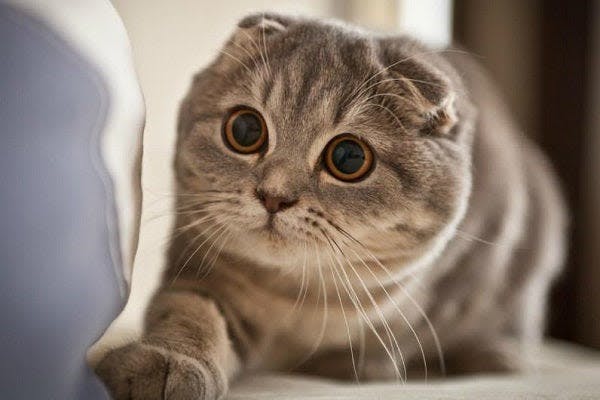
2. Curled ears. This unusual trait is associated with the Cu gene, associated with the American Curl breed. Fortunately, no harmful defects associated with this gene have been identified yet. However, the ears of these cats need to be handled carefully as the ear cartilage is fragile. Regular ear cleaning is also required because more of the inner ear is exposed in comparison to typical ear forms.
3. Rounded ears. Rounded ears were originally observed in a cat in Italy and some free-roaming cats in Texas. These ears are rounded rather than pointed in shape. While the carriers of the trait in Texas actually died out, the one found in Italy is being assessed for breed potential.
4. Four ears. This feature is associated with a recessive mutation that results in four ear flaps (additional flaps do not lead to additional organs of hearing). Sometimes, due to these duplicated ears, a cat’s eyes may be reduced in size and its jaw slightly undershot. Carriers of this trait can be relatively inactive and lethargic and may struggle with possible interferences of brain functioning. This mutation also seems to be lethal, with most kitten carriers actually dying in utero. Despite these data, the majority of recently-reported four eared cats have actually been healthy, indicating that there may be more genes involved in this unusual ear configuration.
Variations in tails
1. Japanese Bobtail "bobbed tail". The bobbed tail in the Japanese Bobtail breed is a unique feature associated with an autosomal dominant mutation in the Japanese Bobtail gene, Jb. Because the mutation is dominant, both homozygotes and heterozygotes will have bobbed tails. Unlike other unusual tail shapes, the mutation causing bobbed tails is harmless and does not relate to lethality or skeletal disorders.
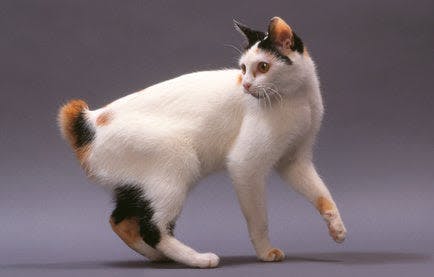
2. Manx tailless. This is a trait caused by a harmful dominant mutation in the Manx tailless gene, M. Homozygous carriers (MM) die before birth while heterozygous carriers (Mm) are either tailless or have very short, stumpy tails. Sometimes they can also exhibit skeletal and organ defects, with some Manx cats dying before ever reaching 12 months of age.
3. Short tails. Tails which are simply "short" in length can be very difficult to distinguish from bobbed or Manx tails. Shortened tails can occur in many different pure or mixed breeds and can be caused by different genetic mutations, most of which are still being investigated.
4. Curly tails. Tails looping over from the back come in different forms and can be caused by different mutations. One such mutation has been developed into the new experimental breed called American Ringtail. The breed started with a Californian cat named Solomon in 1998. The mutation identified in this cat doesn’t seem to be associated with any health issues. Curly tailed cats were bred with Ragdolls and American Shorthairs.
Variations in paws
1. Syndactylism. This is a trait associated with the Split Foot gene, Sh. The dominant mutation of the gene causes a reduction in the number of toes on a cat, giving it a so called "lobster-claw" appearance.
2. Polydactylism. This is a trait associated with different dominant and recessive genes causing a higher number of toes than normal. To learn more about this unusual appearance, read our blog about polydactylism here.
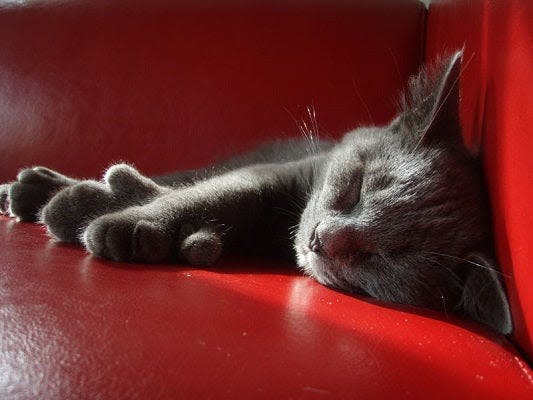
Variations in height and size
1. Munchkin legs. This is the trait of shortened legs, and it is caused by a dominant mutation in the Munchkin gene, Mk. Homozygous (Mk Mk) carriers may be at a higher risk of dying as the kittens are very small in the litter. However, the mutation doesn’t seem to cause impaired mobility or spinal problems, and Munchkin cats are not disabled despite having short legs. The anomaly is not achondroplasia but can be either hypochondroplasia or pseudochondroplasia (meaning that the long bones of the legs are affected and other bodily proportions remain unaffected).
2. Teacup-sized Persians. These are very small, diminutive but proportional Persian cats whose size is caused by a dominant germ-cell mutation first identified in a male Persian named Treker in 1995. Today, Teacup Persians are a separate breed from Persians, and not all of them are descended from Treker. Most of these kittens today were actually raised from Silver and Golden colour divisions.
Variations in coat colours and patterns
Cat coat comes in diverse patterns and colours. There are a number of genes associated with different colours and patterns, as well as fur length and texture. You can find our summary of all important coat-related genes here.
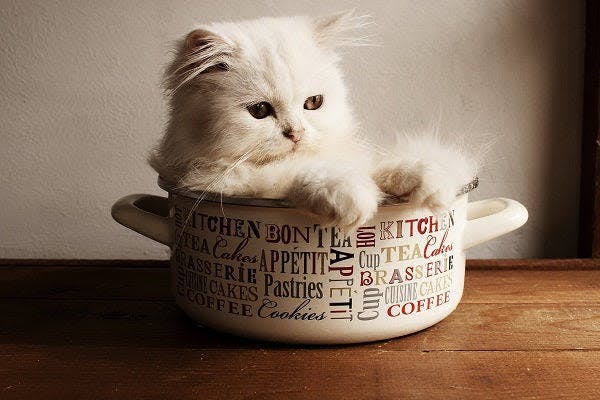
Do you have a special kitty with any of these body-type mutations and features? Share with us-- we would love to meet your beautiful companions!
